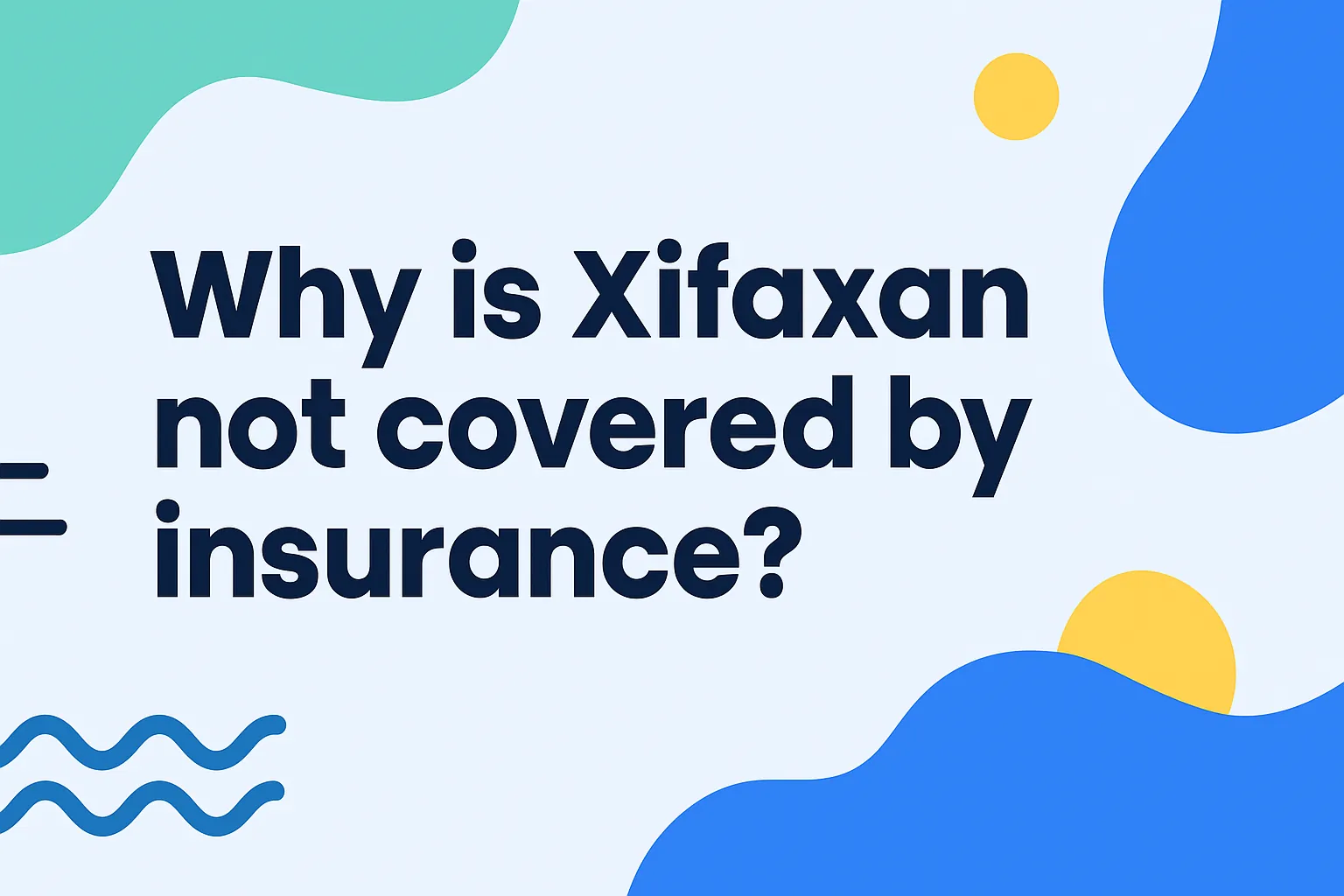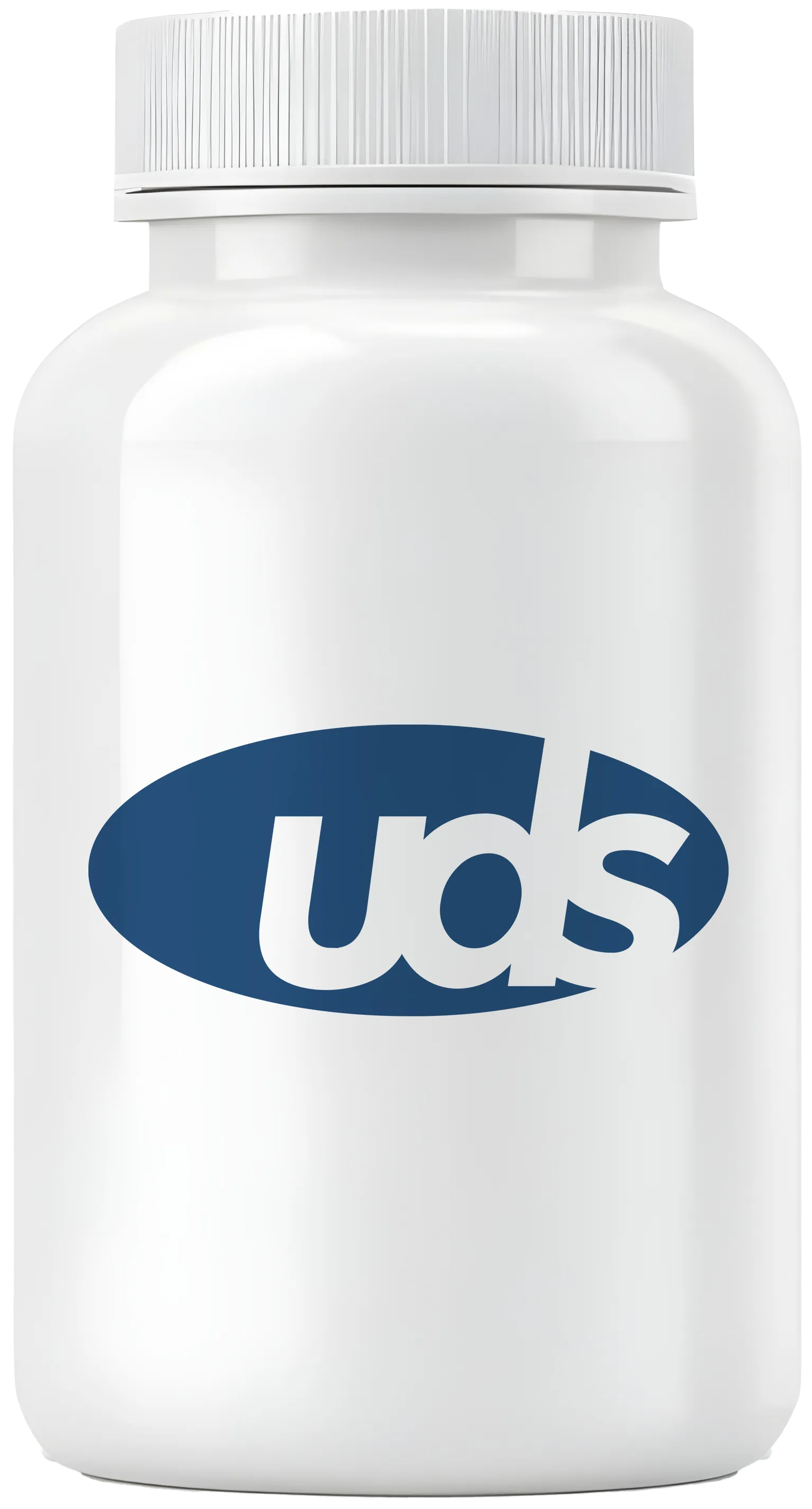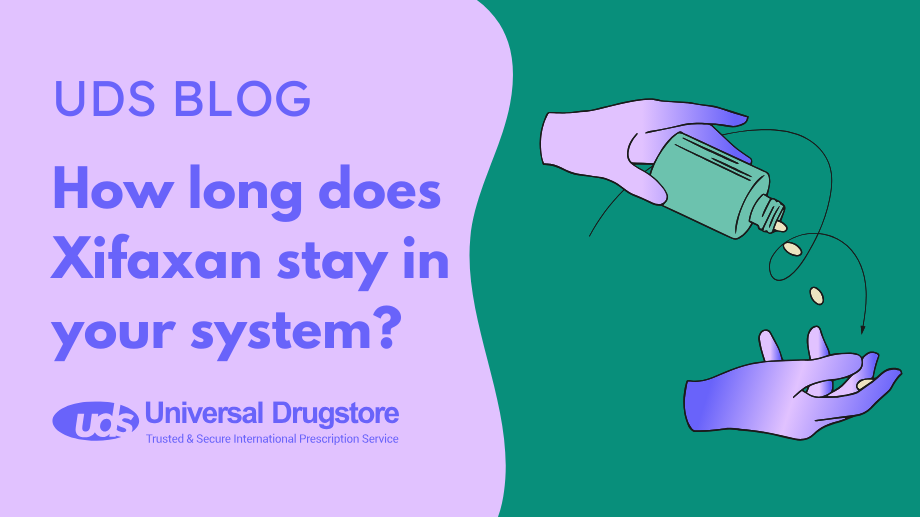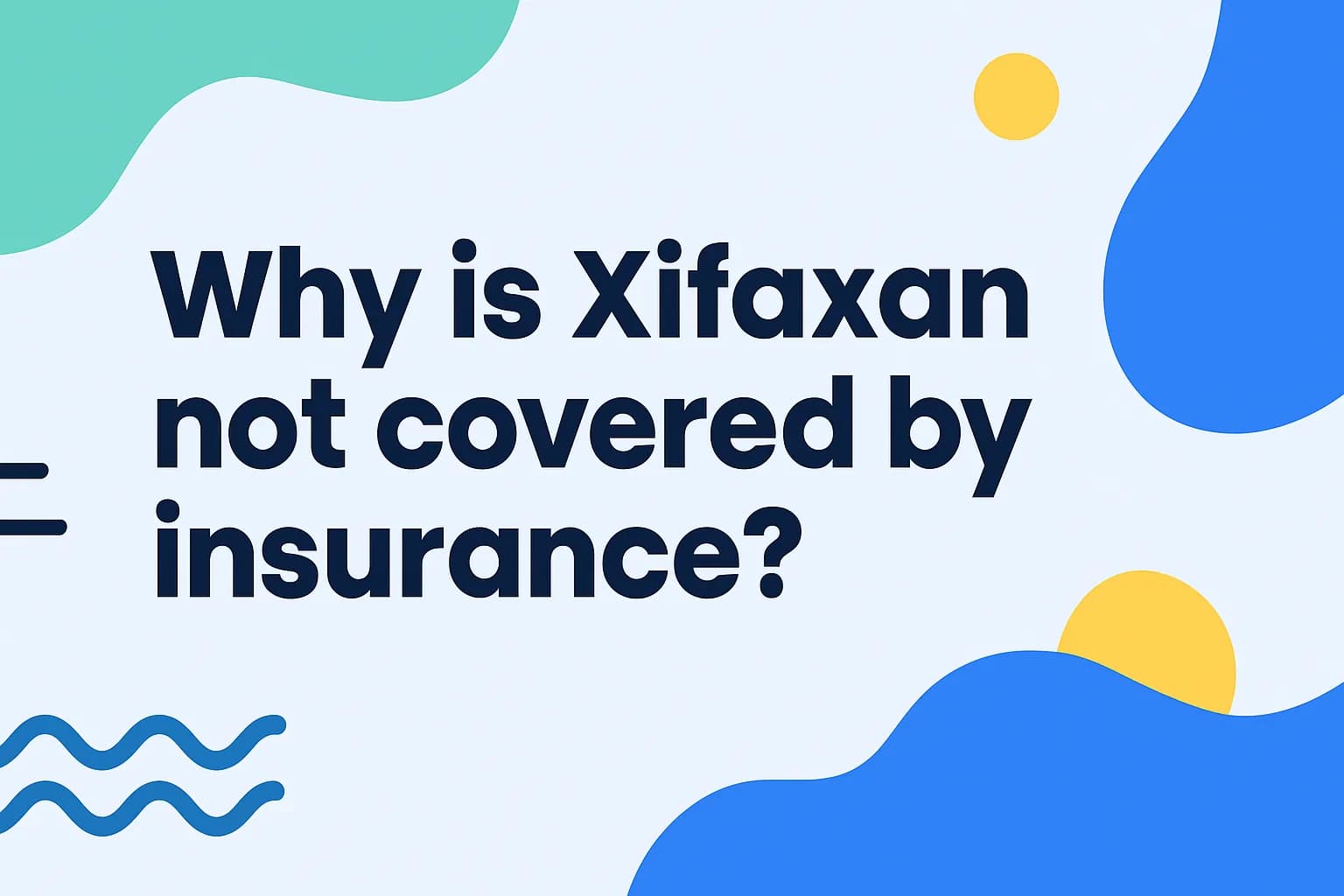Why is Xifaxan not covered by insurance?

Xifaxan (rifaximin) is an expensive brand-name antibiotic that is used to treat irritable bowel syndrome with diarrhea (IBS-D), traveler’s diarrhea, and hepatic encephalopathy.
Every prescription drug plan has a different formulary of medications they will cover. It is estimated by Salix Pharmaceuticals that Xifaxan is covered for 97% of commercially insured patients and 100% of Medicare Part D patients. If your prescription drug plan has denied coverage for Xifaxan, your healthcare provider may need to fill out and submit a Letter of Medical Necessity or prior authorization to get it approved. You will have to contact your plan to see if Xifaxan is on their formulary and what your copay would be.
Keep reading as we discuss how Xifaxan works, other ways you can save money on this medication, and other frequently asked questions.
Xifaxan FAQs
What does Xifaxan treat?
Xifaxan is FDA-approved to treat:
- Travelers’ diarrhea caused by a type of bacteria called Escherichia coli (E. coli) in adults and children 12 years of age and older.
- Overt hepatic encephalopathy (OHE). It stops the growth of bacteria that produce toxins and that may worsen liver disease. Xifaxan is generally used in combination with Enulose (lactulose) to treat this condition.
- Irritable bowel syndrome with diarrhea (IBS-D). Xifaxan has been found effective for treating IBS-D and relieving symptoms such as abdominal pain and diarrhea. Guidelines from the American College of Gastroenterology recommend Xifaxan for the relief of IBS-D symptoms.
While not approved, Xifaxan is sometimes used off-label to treat symptoms of a GI condition called small intestinal bacterial overgrowth (SIBO) such as stomach pain and diarrhea.
What are the common side effects of Xifaxan?
The most common side effects of Xifaxan seen in clinical trials when compared to placebo include:
- Headache
- Nausea
- Swelling in your hands and feet
- Dizziness
- Tiredness
- Bloating and gas
- Increase in your liver enzymes
Other possible Xifaxan side effects include:
- Constipation
- Fever
- Muscle spasms
- Itching
- Stomach pain
- Depression
- Sore throat and runny nose
- Joint pain
- Rash
What are the serious side effects of Xifaxan?
Rarely, Xifaxan may cause serious side effects such as:
- Serious, life-threatening allergic reactions, including anaphylaxis.
Symptoms of anaphylaxis may include hives (raised red patches on your skin), skin rash, swelling of your face, lips, tongue, or throat, and shortness of breath. Seek immediate medical attention if you experience any symptoms of a serious allergic reaction.
Worsening traveler’s diarrhea
Xifaxan only works to treat travelers’ diarrhea caused by a bacteria called Escherichia coli (E. coli). Other bacterial infections can cause travelers’ diarrhea and Xifaxan will not be effective against those.
If your diarrhea symptoms get worse or persist for more than 24 to 48 hours, discontinue Xifaxan and consider alternative antibiotics.
C. difficile diarrhea
All antibiotics, including Xifaxan, can cause a severe intestinal condition from a bacteria called Clostridium difficile (C. diff). Diarrhea from C. diff is a serious infection that can lead to life-threatening colitis and it requires immediate medical attention. This condition can occur during treatment or weeks to months after treatment has stopped.
Get medical help right away if you have symptoms such as increased heart rate, foul-smelling diarrhea, nausea, fever, and frequent bowel movements (even up to 15 times per day).
These are not all of the possible adverse events of Xifaxan. You should always seek medical advice from a healthcare professional for any questions or concerns about your medical condition or treatment. You should also read all the patient information, including your Medication Guide that comes with Xifaxan. You can report side effects to the FDA at 1-800-FDA-1088 or www.fda.gov/medwatch.
Shop Medications
How does Xifaxan work?
The active ingredient in Xifaxan is rifaximin, which is a rifamycin antibiotic. It kills bacteria in your gastrointestinal (GI) tract by stopping them from making certain proteins they need to survive.
What does your healthcare provider need to know before you start taking Xifaxan?
You should not take this medication if you have an allergy to rifaximin or any of the inactive ingredients in this product. You should also avoid Xifaxan if you are allergic to any other rifamycin antibiotics such as Mycobutin (rifabutin), Rifadin (rifampin), or Priftin (rifapentine).
You should be sure your healthcare provider is aware of all your medical conditions as they may be contraindications or you may need increased monitoring during treatment, including:
- Liver disease. Having a severe liver impairment can raise the level of Xifaxan in your blood, which could increase your risk of side effects.
- If you are pregnant or plan to become pregnant. It is not known whether Xifaxan is safe to take during pregnancy.
- If you are breastfeeding or plan to breastfeed. It is not known whether Xifaxan passes into breast milk or the effects it may have on your breastfed infant.
Are there drug interactions with Xifaxan?
When Xifaxan is taken with other prescription medications, over-the-counter drugs, vitamins, herbal products, and supplements, it may change how they work or increase the risk of side effects. Tell your healthcare provider about all your current medications to check for any drug interactions, including:
- P-glycoprotein and/or OATP inhibitors such as cyclosporine
These medications may lead to an increase in the amount of Xifaxan absorbed by your body.
- Warfarin
Your dose of warfarin may need to be adjusted to maintain its proper blood-thinning effect if taken with Xifaxan.
This list is not complete and many other drugs may interact with Xifaxan.
How much does Xifaxan cost?
If you don’t have insurance coverage or your insurance does not cover Xifaxan, it can be very expensive. The average retail price is over $2500 for a 14-day course of treatment for IBS-D (#42 Xifaxan 550 mg tablets). You can get #60 brand-name Xifaxan 550 mg tablets for less than $750 from Universal Drugstore (UDS). We also have access to a generic version of Xifaxan that is not available at pharmacies in the USA. For #100 tablets of generic Xifaxan 550 mg, you will pay around $200.
Does Medicare cover Xifaxan?
Yes, all Medicare Part D plans cover Xifaxan. Your copay will depend on which coverage stage you are in. Contact your Part D plan to see how much you will have to pay for this medication.
Why might your insurance not cover Xifaxan for your condition?
Because of the high cost of Xifaxan, your insurance company may refuse to cover this medication. The drug could be on your insurer’s list of excluded drugs, or the insurer may make you try a variety of other drugs before they will approve Xifaxan.
What if you can’t afford Xifaxan?
Even if you have insurance coverage, you may not be able to afford your copay of Xifaxan. To save money on Xifaxan, you can:
- Order from Universal Drugstore (UDS).
- Find a copay card, patient assistance program, or savings card.
- Use the Xifaxan Instant Savings Card. Call 1-866-XIFAXAN (1-866-943-2926) and select option 1.
- Check with your local Medicaid office to see if you qualify.
- Use a discount card at your local pharmacy.
- Compare the price at different pharmacies and online.
- Talk with your healthcare provider about alternatives.
What diagnosis will cover Xifaxan?
Xifaxan 550 mg tablets are approved to treat adults 18 years of age and older with irritable bowel syndrome with diarrhea (IBS-D) and hepatic encephalopathy. Xifaxan 200 mg tablets are approved to treat adults and children 12 years of age and older with traveler’s diarrhea. Even when used for approved uses, your insurance plan may require prior authorization or you may have to try an alternative medication first. Contact your plan to get details on coverage for Xifaxan.





